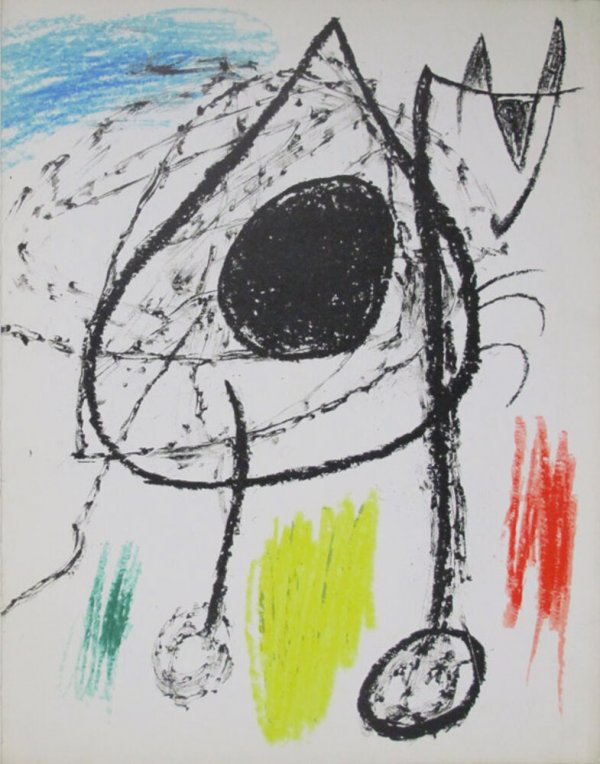Joan Miró
Joan Miró (Barcelona, 1893 – Palma de Majorca, 1983) was one of the most significant artists of the twentieth century. He practiced painting, sculpture, ceramics, engraving, drawing, tapestry, set design and poetry. Although his discovery of the landscape around Mont-roig del Camp, Tarragona, during his recovery from an illness when he was very young initially led him to take up painting, he soon became interested in compositional problems. His first exhibition was held at Sala Dalmau in Barcelona in 1918, and in 1920 he travelled to Paris, where he came into contact with the painter André Masson and his circle. His earliest work shows fauvist, expressionist and cubist influences, but during the thirties he refined and stylised his language, creating a flat painting style with bright colours and a highly personal universe of cosmic symbols and simple shapes. Miró returned to Catalonia in 1940 and lived between Mont-roig del Camp and Palma de Majorca.
A major retrospective of his work at the New York MoMA in 1941, which brought him international acclaim, was the first of numerous Miró retrospectives around the world: at the Musée National d’Art Moderne in Paris (1962 and 1978), Tate Gallery in London (1964), Grand Palais in Paris (1974), Tate Modern in London (2011) and the Joan Miró Foundation in Barcelona (2011), to name just a few. In 1975, the Joan Miró Foundation opened in a building designed by the architect Josep Lluís Sert in Barcelona, and in 1983 the Pilar and Joan Miró Foundation opened in Palma de Majorca.
![[Cartell de l'exposició "Cartons" de Joan Miró a la Galerie Maeght, París]](https://img.macba.cat/public/styles/large/public/imagenes/obras/4836_001_l.jpg?itok=0arqJgOV×tamp=1669880473)

![[Sense títol]](https://img.macba.cat/public/styles/large/public/imagenes/obras/4993_001_l.jpg?itok=8xO87n0f×tamp=1669880748)

![[Sense títol]](https://img.macba.cat/public/styles/large/public/imagenes/obras/4462_001_l.jpg?itok=Sg2w3ACM×tamp=1669880538)
![[Sense títol]](https://img.macba.cat/public/styles/large/public/imagenes/obras/4992_001_l.jpg?itok=OLY_nHq_×tamp=1669880745)
![[Sense títol]](https://img.macba.cat/public/styles/large/public/imagenes/obras/4991_001_l.jpg?itok=2XKHAxBw×tamp=1669880742)



![Calder : escultures [text de Joan Miró]](https://img.macba.cat/public/styles/large/public/imagenes/archivo/documento_archivo_A12792.jpg?itok=ZE6QYhMP×tamp=1596686778)
![[Document mecanoscrit sobre Joan Miró i Joan Prats]](https://img.macba.cat/public/styles/large/public/img-no-disponible-en.png?itok=jcXwbyt1)
![Exposición Surrealismo : del 23-12-64 al 11-1-65, galería de arte Grises, Bilbao : originales de Cuixart, Dalí, Jardiel, Millares, Miró, Ponç, Saura, Tàpies, Tharrats / [texto: J.M. Moreno Galván]](https://img.macba.cat/public/styles/large/public/imagenes/archivo/documento_archivo_A01069.jpg?itok=t82Rm1q3×tamp=1675185735)
